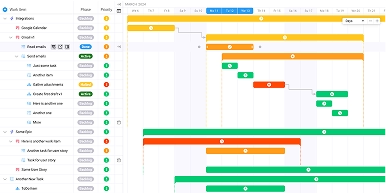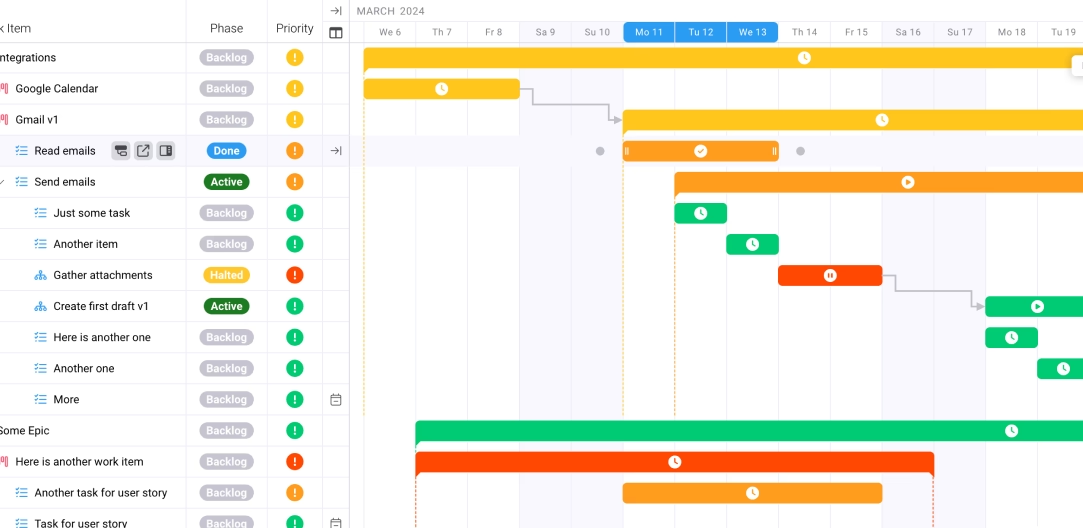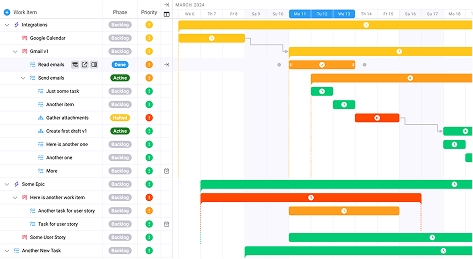
Agency Operations: The Blueprint for Running a Well-Oiled Machine
Key takeaways:
The harsh reality facing modern agencies is undeniable: Only 10% of agency professionals described 2024 as healthy for their business, while 44% said it was a struggle. Yet those who master agency operations—the systematic orchestration of resources, workflows, and strategic processes—are not just surviving but thriving. Agency operations represent the difference between chaos and control, between reactive firefighting and proactive growth. This comprehensive blueprint reveals how to transform your agency into a well-oiled machine that delivers exceptional results while maintaining sustainable profitability and team satisfaction.
The Current Challenge - What's Broken in Agency Operations
Today's agencies face an unprecedented convergence of operational obstacles that threaten their very survival. Agency competition, managing projects efficiently, and dealing with agency burnout are the top challenges facing agencies in 2024, creating a perfect storm of operational complexity.
The most devastating challenge lies in data fragmentation. Data fragmentation critically impacts agency performance in team utilization, project profitability, and revenue management, leaving agencies blind to their own operational inefficiencies. When critical information lives in scattered spreadsheets, disconnected software platforms, and individual team members' heads, decision-making becomes guesswork rather than strategy.
Resource misallocation compounds these problems exponentially. Without clear visibility into team capacity and project requirements, agencies consistently overcommit their most valuable assets—their people. The result? 11.4% of a company's investment in a project is wasted due to poor project performance, representing millions of dollars in lost productivity across the industry.
Project delivery suffers as teams struggle with unclear workflows, undefined roles, and shifting priorities. What should be systematic processes devolve into ad hoc reactions, creating stress cascades that ripple through every aspect of operations. Client relationships deteriorate under the weight of missed deadlines and scope creep, while team members burn out from unsustainable workloads and constantly changing expectations.
The financial implications are staggering. While 52.94% of surveyed digital agencies experienced profit growth of 5% to 25% in the past 12 months, this masks underlying operational inefficiencies that prevent agencies from achieving their full potential. The average profit margin for marketing agencies in 2024 is around 15-20%, yet many agencies operate far below this benchmark due to operational dysfunction.
The Strategic Framework - The SCALE Methodology for Agency Operations
The solution lies in implementing a comprehensive operational framework that addresses every aspect of agency management. The SCALE methodology provides a systematic approach to building operational excellence:
S - Systematize Core Processes: Create standardized workflows for every repeatable agency function, from client onboarding to project delivery and performance reporting. Documentation becomes the foundation of operational consistency.
C - Centralize Resource Management: Implement unified systems that provide real-time visibility into team capacity, project requirements, and resource allocation. This eliminates the guesswork that leads to overcommitment and burnout.
A - Automate Routine Tasks: Deploy technology solutions that handle repetitive activities, freeing your team to focus on high-value creative and strategic work that drives revenue growth.
L - Leverage Data-Driven Decision Making: Establish comprehensive tracking and reporting systems that transform operational data into actionable insights for continuous improvement.
E - Establish Continuous Enhancement Cycles: Build feedback loops and review processes that ensure your operations evolve with changing business needs and market conditions.
This framework recognizes that Agency resource management software helps optimize operations from resource allocation to project delivery, but technology alone isn't sufficient. Success requires the integration of people, processes, and technology into a coherent operational system.
Implementation Tactics - Building Your Operational Engine
Strategic Resource Planning and Capacity Management
Effective resource planning is essential for agency scalability and project delivery success, yet most agencies approach it reactively rather than strategically. Implement dynamic capacity planning that forecasts resource needs 3-6 months ahead based on sales pipeline, project timelines, and team availability.
Create detailed resource profiles that capture not just availability but skill levels, project preferences, and professional development goals. This enables strategic assignment decisions that optimize both project outcomes and employee satisfaction. The majority of agencies maintain a roster of 11 to 20 clients and have 1 to 5 full-time employees, making resource optimization critical for sustainable growth.
Workflow Optimization and Process Automation
Streamlined workflows can save agencies up to 20 hours weekly through optimization strategies, representing substantial cost savings and productivity improvements. Begin by mapping current workflows for critical processes including client onboarding, project kickoff, creative development, approval cycles, and project closure.
Identify automation opportunities at every workflow stage. Marketing workflow optimization helps teams ensure marketing efforts yield the best possible results by focusing on operational efficiency, but the principles apply across all agency functions. Deploy project management software, automated reporting tools, and integrated communication platforms that reduce manual coordination overhead.
Financial Performance and Profitability Management
Strategic profitability optimization requires comprehensive approaches to increasing margins and revenue. Implement real-time financial tracking that monitors project profitability, resource costs, and margin performance at granular levels.
Revenue per employee serves as a critical benchmark for operational efficiency. The average digital agency made $172,000 per full-time employee in 2023, providing a baseline for performance measurement. Track this metric monthly and investigate variances to identify optimization opportunities.
Technology Integration and Systems Architecture
Modern agencies require integrated technology stacks that eliminate data silos and enable seamless information flow. Implement centralized platforms that connect project management, time tracking, billing, and CRM functions into unified operational dashboards.
Choose solutions that provide client portal functionality, enabling transparent communication and collaboration while reducing internal administrative overhead. This transparency builds trust while freeing internal resources for revenue-generating activities.
Leadership and Change Management
COOs play a critical role in optimizing project management systems for agency growth, but operational excellence requires leadership commitment at every level. Establish clear accountability structures with defined roles, responsibilities, and performance expectations.
Invest in team training and development programs that build operational competency alongside creative skills. Change management becomes critical as teams adapt to new processes and technologies—communicate benefits clearly and provide adequate support during transitions.
Measuring Success - Operational KPIs That Matter
Effective operations management requires comprehensive measurement systems that track both leading and lagging indicators of operational health. Implement dashboard solutions that monitor key metrics in real-time while providing historical trending analysis.
Financial Metrics:
- Delivery margin percentage and trend analysis
- Revenue per employee benchmarked against industry standards
- Project profitability by client and service type
- Cash flow predictability and accounts receivable aging
Operational Efficiency Metrics:
- Resource utilization rates across teams and individuals
- Project delivery timeline accuracy and variance analysis
- Client satisfaction scores and retention rates
- Team productivity measures and capacity optimization
Growth and Development Indicators:
- New business conversion rates and pipeline health
- Service line profitability and expansion opportunities
- Employee satisfaction and retention statistics
- Skill development and capability enhancement tracking
Market context provides essential perspective for performance evaluation. 61% of agency professionals expect an increase in ad spending in 2024, suggesting growing opportunities for well-positioned agencies.
Regular performance review cycles—monthly operational reviews, quarterly strategic assessments, and annual comprehensive evaluations—ensure continuous improvement and course correction. Use these sessions to identify optimization opportunities, celebrate successes, and address emerging challenges proactively.
Future Considerations - Operational Evolution and Adaptation
The agency landscape continues evolving rapidly, demanding operational flexibility and continuous adaptation. Build systems that can scale with growth while maintaining quality and efficiency standards. Consider emerging technologies including artificial intelligence, automation platforms, and advanced analytics tools that can enhance operational capabilities.
Market dynamics will continue shifting, requiring operational agility to capture new opportunities and mitigate emerging risks. Develop scenario planning capabilities that enable rapid response to changing conditions—from economic fluctuations to competitive pressures and client demand shifts.
Talent management becomes increasingly critical as skilled professionals have more options and higher expectations. Operational excellence must include employee experience optimization, career development pathways, and work-life balance considerations that attract and retain top talent.
For innovative agencies, Ravetree provides comprehensive project management software solutions designed specifically for professional services organizations. These platforms enable the integrated approach to agency operations that transforms good agencies into industry leaders.
Conclusion
The blueprint for running a well-oiled agency operations machine requires more than good intentions—it demands systematic implementation of proven methodologies, comprehensive measurement systems, and continuous optimization processes. Agencies that master these operational fundamentals will not merely survive current market challenges but position themselves for sustained growth and market leadership.
Agency operations excellence isn't achieved overnight, but the investment in building robust operational systems pays dividends through improved profitability, team satisfaction, and client relationships. The agencies thriving today and tomorrow will be those that treat operations not as administrative overhead but as strategic competitive advantages.
Start building your operational blueprint today. Your future success depends on the operational foundation you create now.
Frequently Asked Questions
How long does it typically take to implement comprehensive agency operations improvements?
Most agencies see initial improvements within 60-90 days, with comprehensive transformation requiring 6-12 months for full implementation and optimization.
What's the ROI on investing in agency operations optimization?
Well-implemented operations improvements typically generate 15-25% productivity gains and 10-15% margin improvements within the first year.
How do you handle team resistance to new operational processes?
Success requires clear communication of benefits, adequate training, and phased implementation that allows gradual adjustment rather than overwhelming change.
What are the most common mistakes agencies make when optimizing operations?
The biggest mistakes include trying to change everything simultaneously, inadequate training and support, and failing to measure results consistently.
How do operations improvements affect client relationships?
Better operations lead to more predictable delivery timelines, clearer communication, and higher-quality outcomes that strengthen client relationships and retention.
What role does leadership play in operational transformation success?
Leadership commitment is essential—operational changes require consistent support, resource allocation, and modeling of desired behaviors from management.
How often should agencies review and update their operational processes?
Quarterly reviews for minor adjustments and annual comprehensive evaluations work well, with additional reviews triggered by significant growth or market changes.









